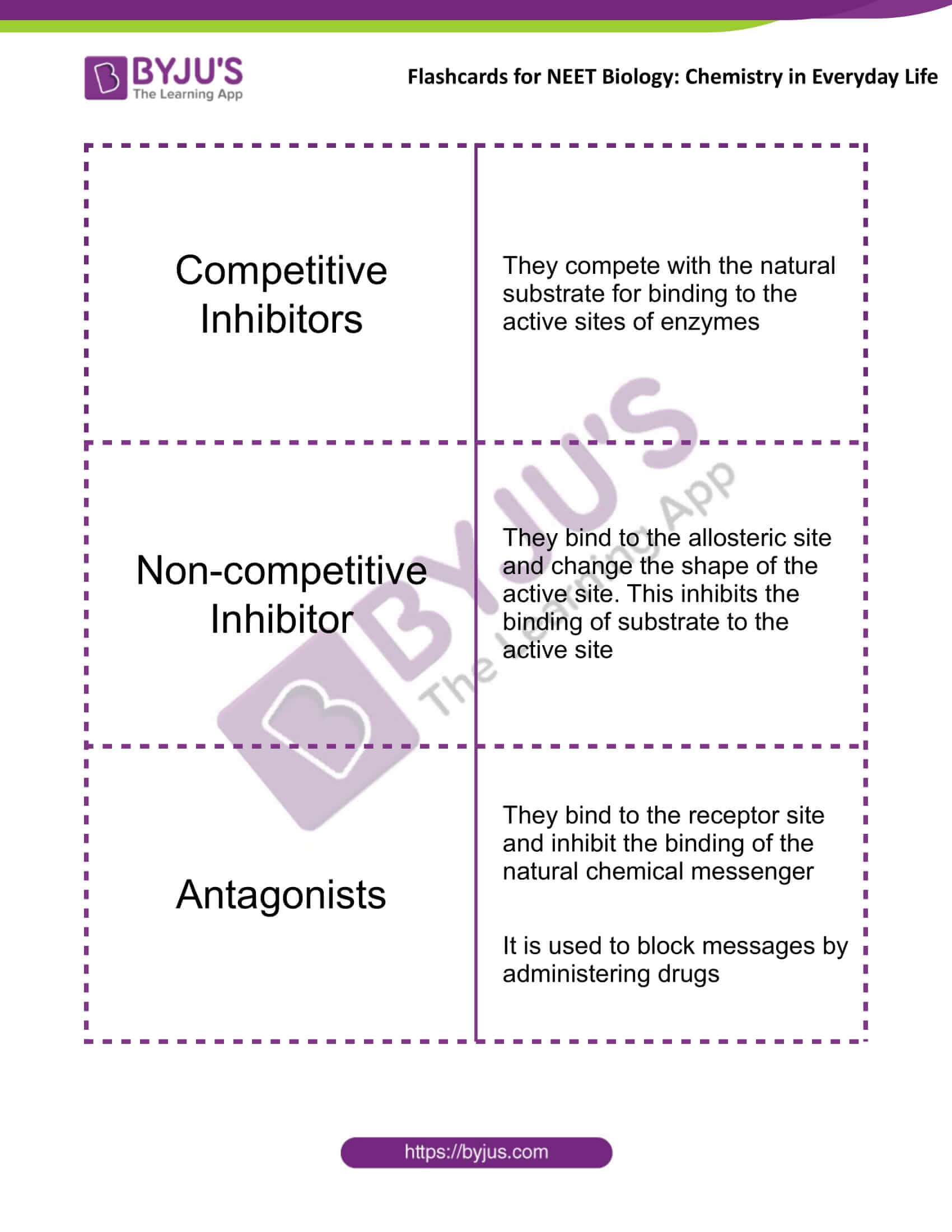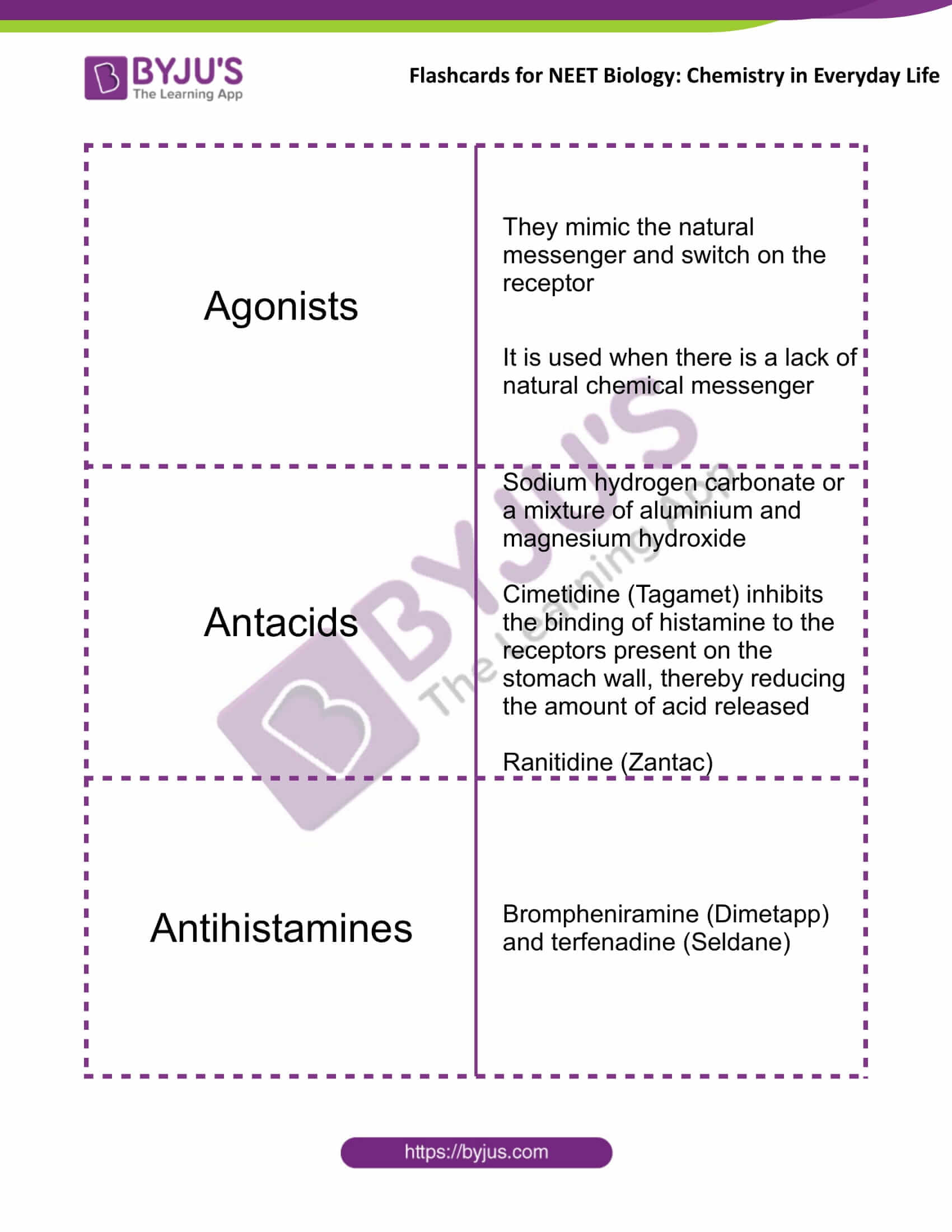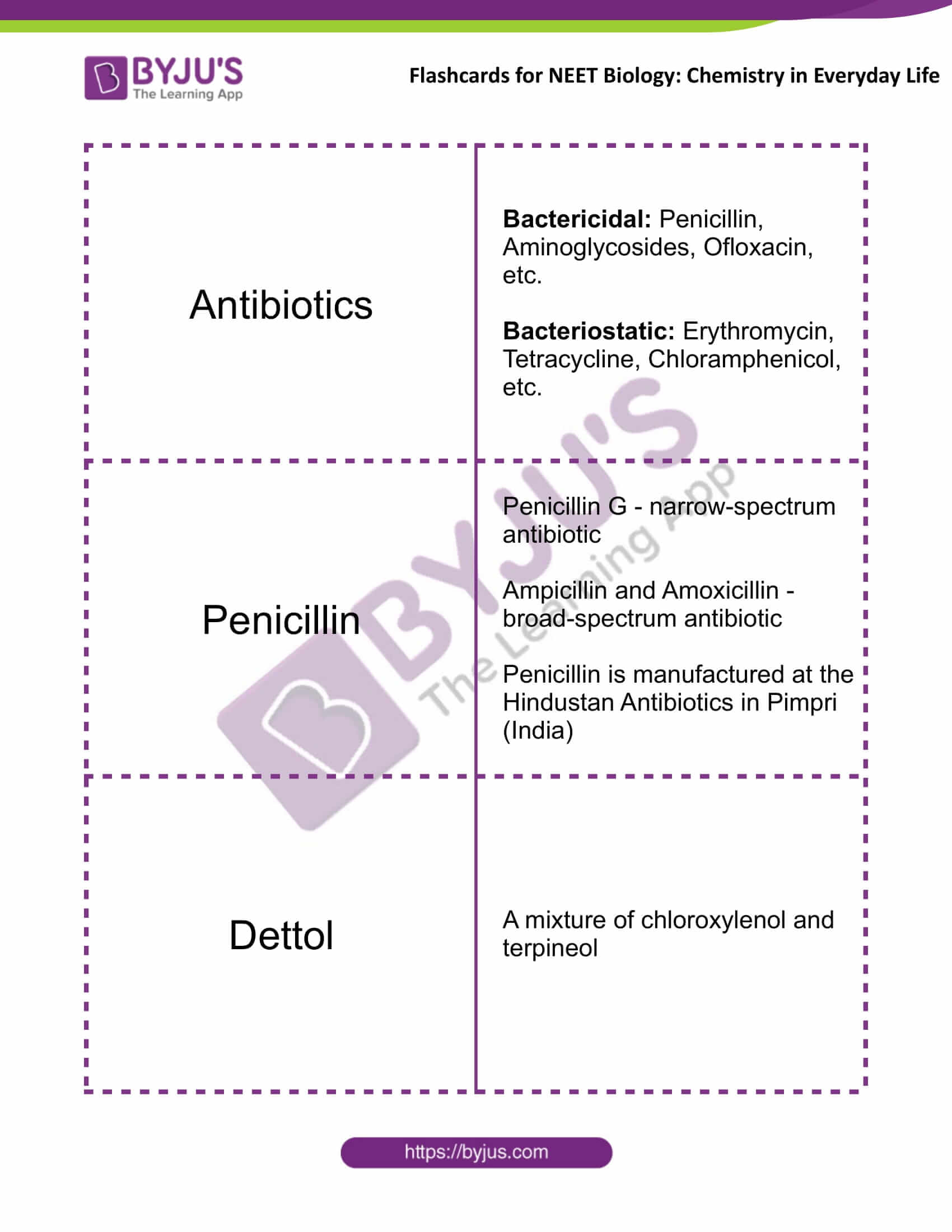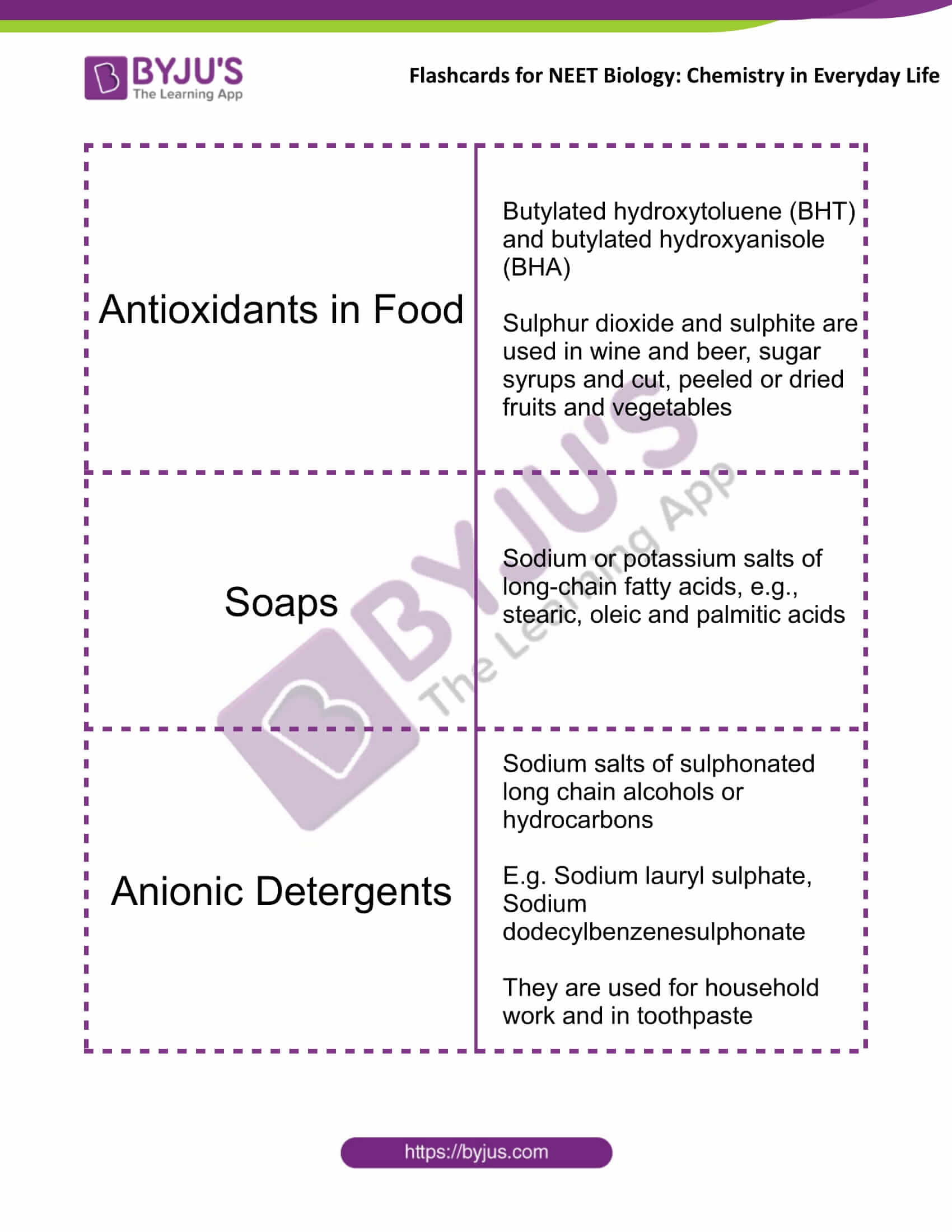Flashcards for NEET Chemistry are designed to boost your NEET preparation. Find below flashcards for the chapter “Chemistry in Everyday Life”. These flashcards are prepared as per the NEET syllabus. These are helpful for aspirants of NEET and other exams, during last-minute revision. It covers all the important points that are frequently asked in the exam. Check BYJU’S, for the full set of Flashcards and Study material for NEET Chemistry.
Download PDF of NEET Chemistry Flashcards for Chemistry in Everyday Life
|
Name of the NEET Sub-section |
Topic |
Flashcards Helpful for |
|
Chemistry |
Chemistry in Everyday Life |
NEET Exams |
|
Chemistry in Everyday Life |
|
|
Competitive Inhibitors |
They compete with the natural substrate for binding to the active sites of enzymes |
|
Non-competitive Inhibitor |
They bind to the allosteric site and change the shape of the active site. This inhibits the binding of substrate to the active site |
|
Antagonists |
They bind to the receptor site and inhibit its binding of the natural chemical messenger It is used to block messages by administering drugs |
|
Agonists |
They mimic the natural messenger and switch on the receptor It is used when there is a lack of natural chemical messenger |
|
Antacids |
Sodium hydrogen carbonate or a mixture of aluminium and magnesium hydroxide Cimetidine (Tagamet) inhibits the binding of histamine to the receptors present on the stomach wall, thereby reducing the amount of acid released Ranitidine (Zantac) |
|
Antihistamines |
Brompheniramine (Dimetapp) and terfenadine (Seldane) |
|
Tranquilizers |
They affect the neurotransmission mechanism from nerve to receptor E.g. chlordiazepoxide, meprobamate, equanil, valium and serotonin, etc. |
|
Barbiturates |
They are a class of tranquilizers and are hypnotic E.g. veronal, amytal, nembutal, luminal and seconal, etc. |
|
Analgesics |
They reduce pain Non-narcotic analgesics: They are non-addictive, e.g. aspirin and paracetamol Narcotic analgesics: Opiates such as morphine, codeine, heroin, etc. |
|
Antibiotics |
Bactericidal: Penicillin, Aminoglycosides, Ofloxacin, etc. Bacteriostatic: Erythromycin, Tetracycline, Chloramphenicol, etc. |
|
Penicillin |
Penicillin G – narrow-spectrum antibiotic Ampicillin and Amoxicillin – broad-spectrum antibiotic Penicillin is manufactured at the Hindustan Antibiotics in Pimpri (India) |
|
Dettol |
A mixture of chloroxylenol and terpineol |
|
Antiseptics |
Furacine, soframycin, bithionol, tincture of iodine, iodoform, boric acid, etc. |
|
Disinfectants |
They are applied to the surface, drainage systems, instruments, etc. E.g. one per cent solution of phenol, 0.2 to 0.4 ppm chlorine, sulphur dioxide in very low concentrations, etc. |
|
Antifertility Drugs |
They are a mixture of synthetic estrogen and progesterone derivatives and are used for family planning E.g. Norethindrone (progesterone derivative), ethynylestradiol (novestrol) (estrogen and progesterone derivative) |
|
Saccharin |
It is an artificial sweetener 550 times more sweet compared to cane sugar Ortho-sulfabenzamide |
|
Aspartame |
It is an artificial sweetener 100 times more sweet compared to cane sugar It is the methyl ester of a dipeptide, aspartic acid and phenylalanine |
|
Artificial Sweetening Agents |
Saccharin – 550 times sweeter than cane sugar Aspartame – 100 times sweeter than cane sugar Alitame – 2000 times sweeter than cane sugar Sucralose – 600 times sweeter than cane sugar |
|
Antioxidants in Food |
Butylated hydroxytoluene (BHT) and butylated hydroxyanisole (BHA) Sulphur dioxide and sulphite are used in wine and beer, sugar syrups and cut, peeled or dried fruits and vegetables |
|
Soaps |
Sodium or potassium salts of long-chain fatty acids, e.g., stearic, oleic and palmitic acids |
|
Anionic Detergents |
Sodium salts of sulphonated long-chain alcohols or hydrocarbons E.g. Sodium lauryl sulphate, Sodium dodecylbenzenesulphonate They are used for household work and in toothpaste |
|
Cationic Detergents |
Quaternary ammonium salts of amines with acetates, chlorides or bromides E.g. Cetyltrimethylammonium bromide, used in hair conditioners |
|
Non-ionic Detergents |
They do not contain any ion E.g. compound made by the reaction of stearic acid and polyethylene glycol E.g. liquid dishwashing detergents |
Get access to the full set of flashcards for NEET Chemistry, only at BYJU’S.
|
Also check: |








Comments